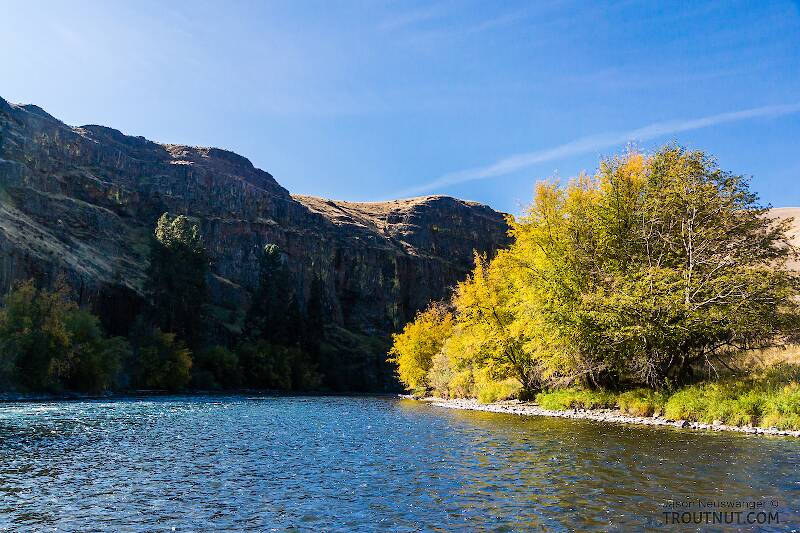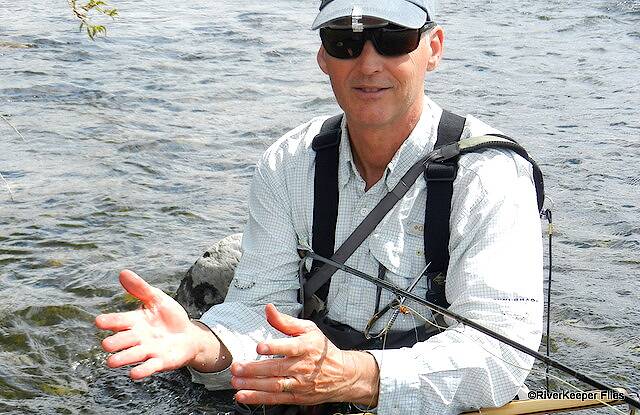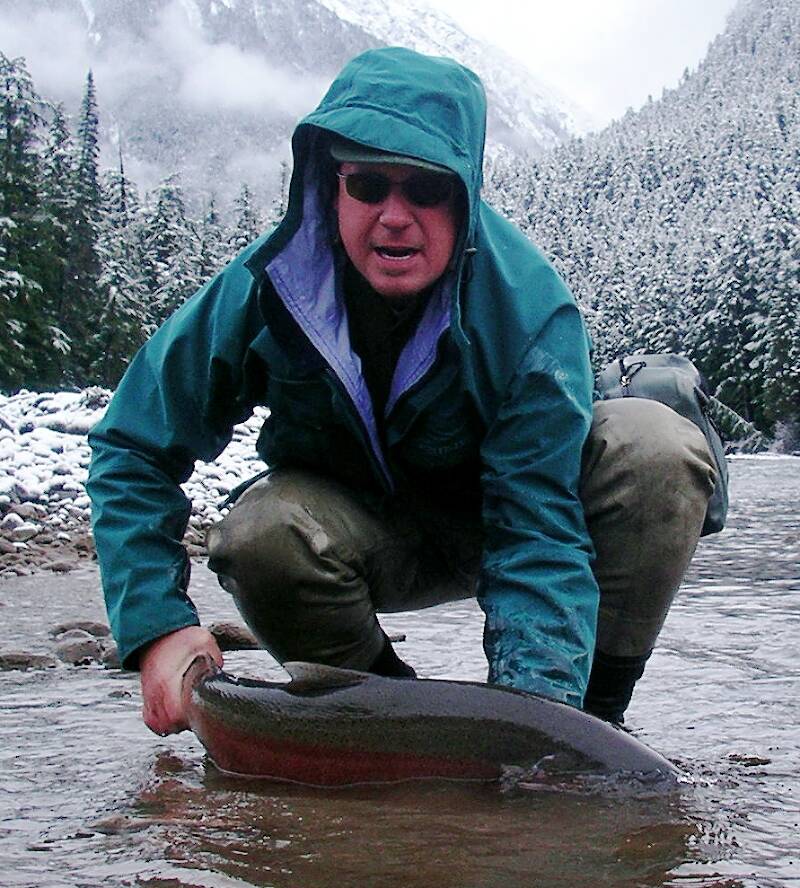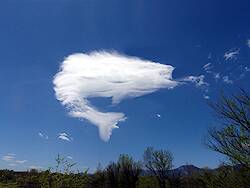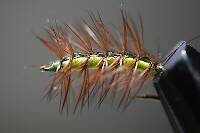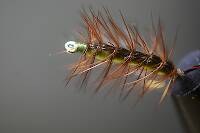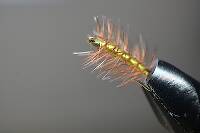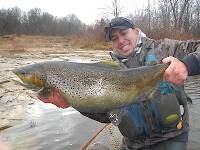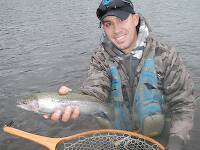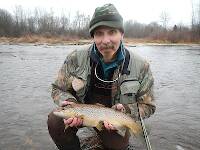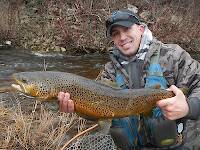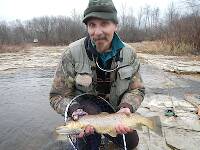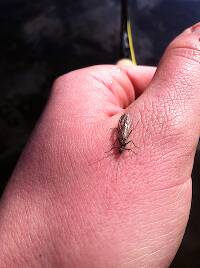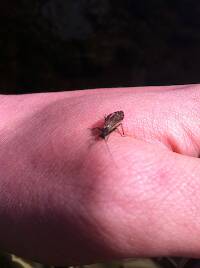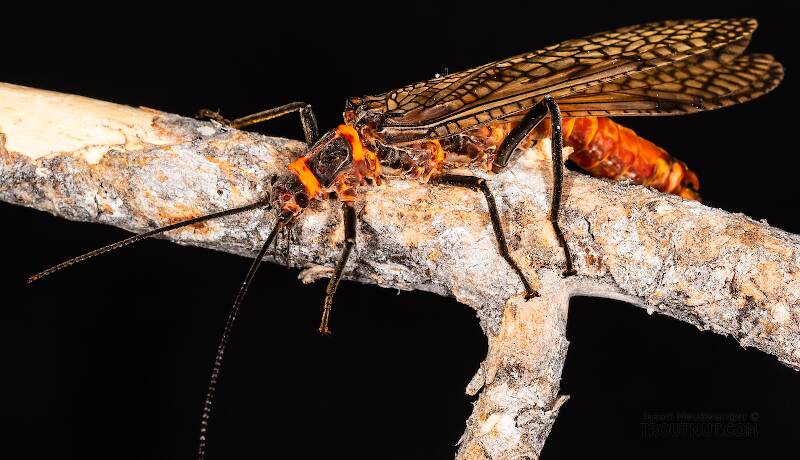
Salmonflies
Pteronarcys californica
The giant Salmonflies of the Western mountains are legendary for their proclivity to elicit consistent dry-fly action and ferocious strikes.
Featured on the forum
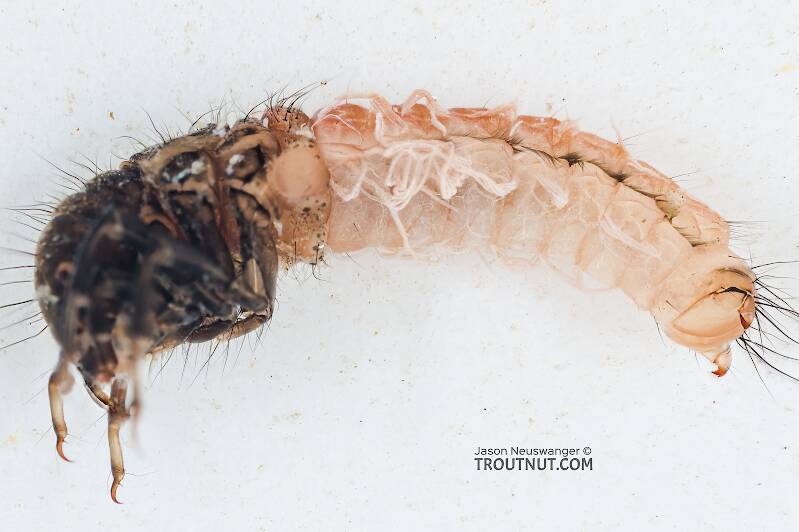
This specimen keys pretty easily to Onocosmoecus, and it closely resembles a specimen from Alaska which caddis expert Dave Ruiter recognized as this genus. As with that specimen, the only species in the genus documented in this area is Onocosmoecus unicolor, but Dave suggested for that specimen that there might be multiple not-yet-distinguished species under the unicolor umbrella and it would be best to stick with the genus-level ID. I'm doing the same for this one.

Troutnut is a project started in 2003 by salmonid ecologist Jason "Troutnut" Neuswanger to help anglers and
fly tyers unabashedly embrace the entomological side of the sport. Learn more about Troutnut or
support the project for an enhanced experience here.
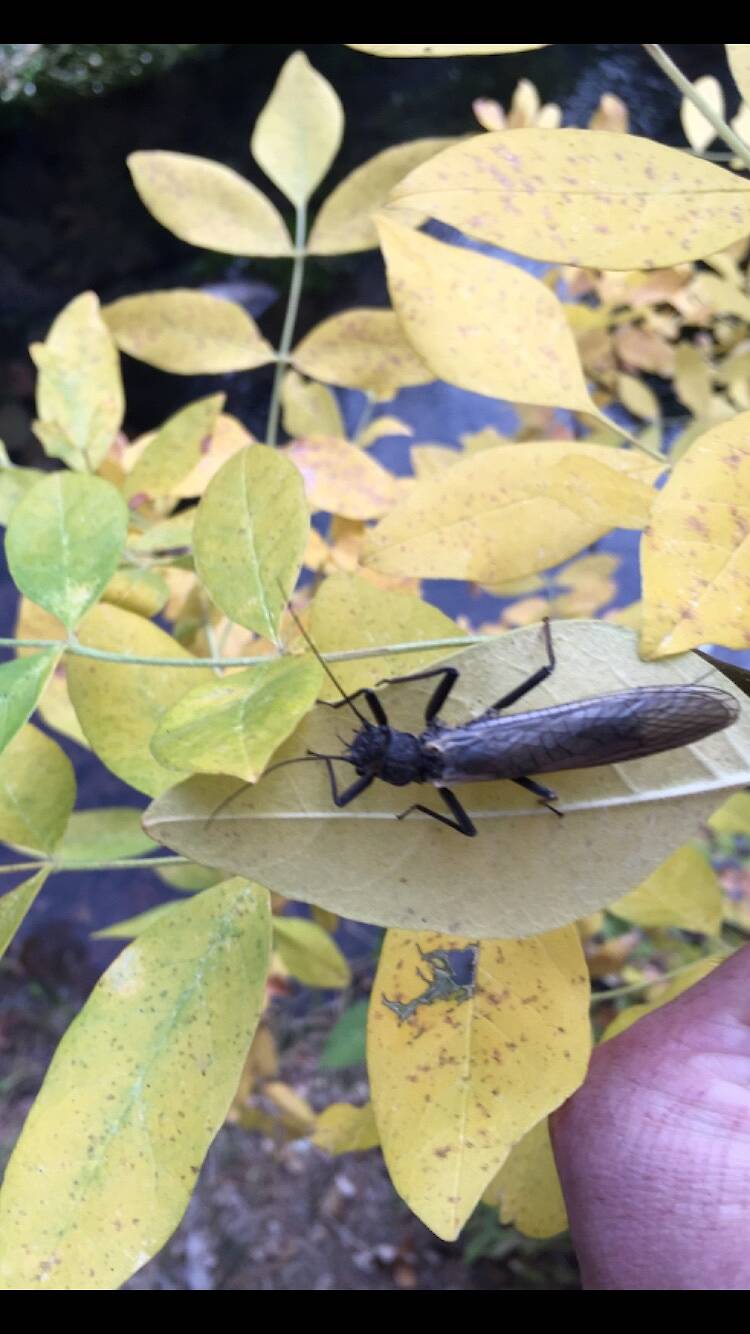
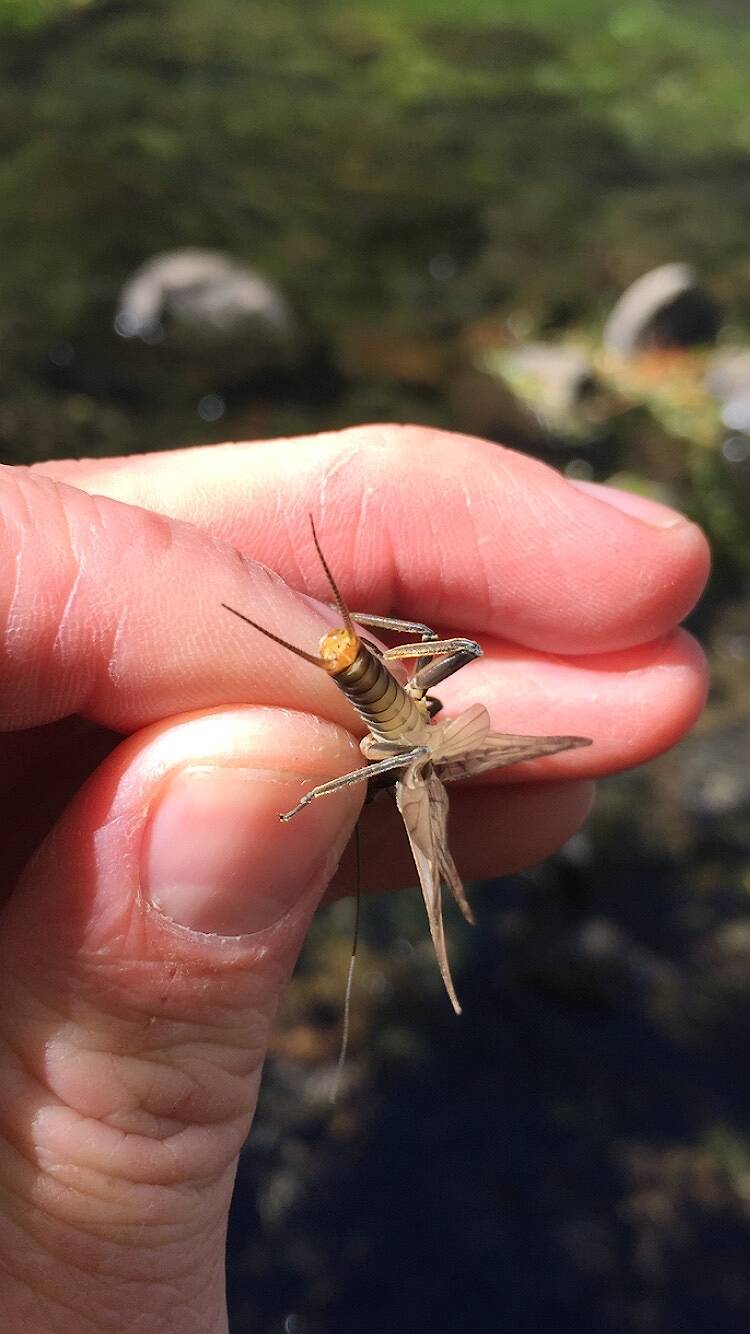
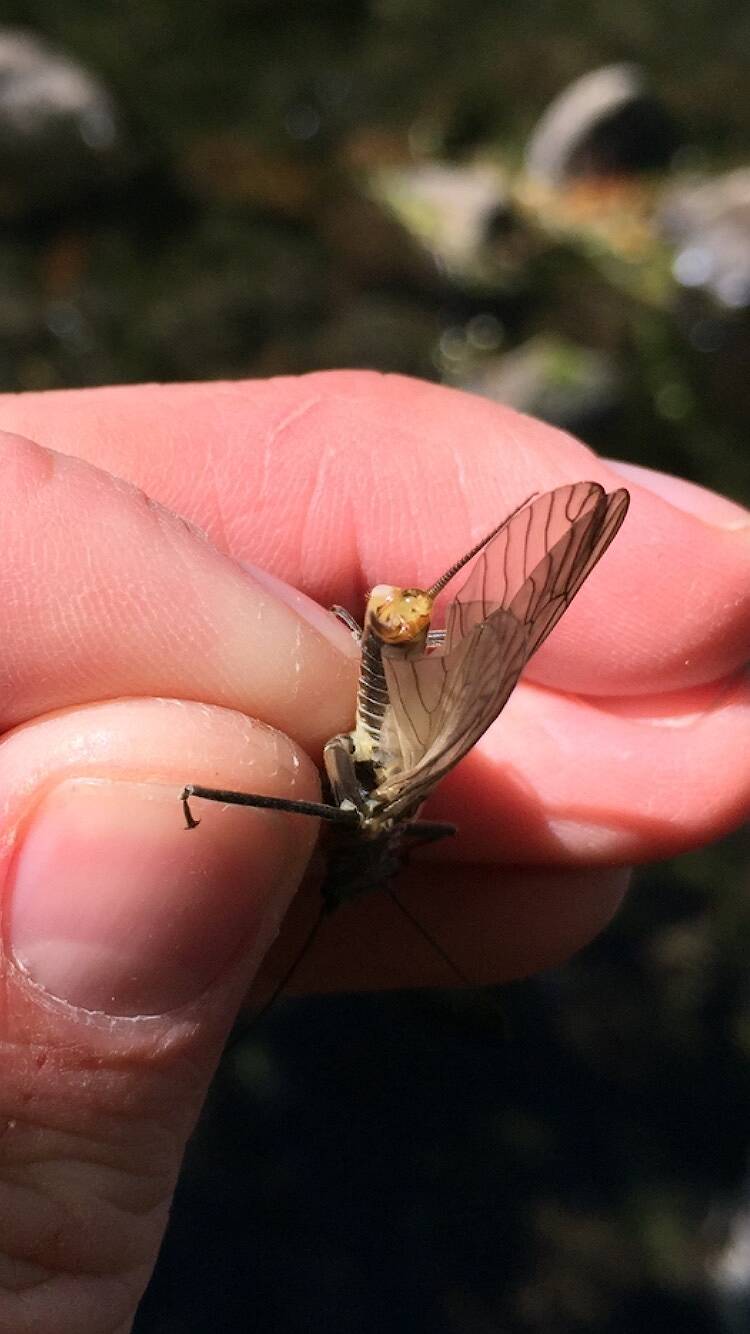
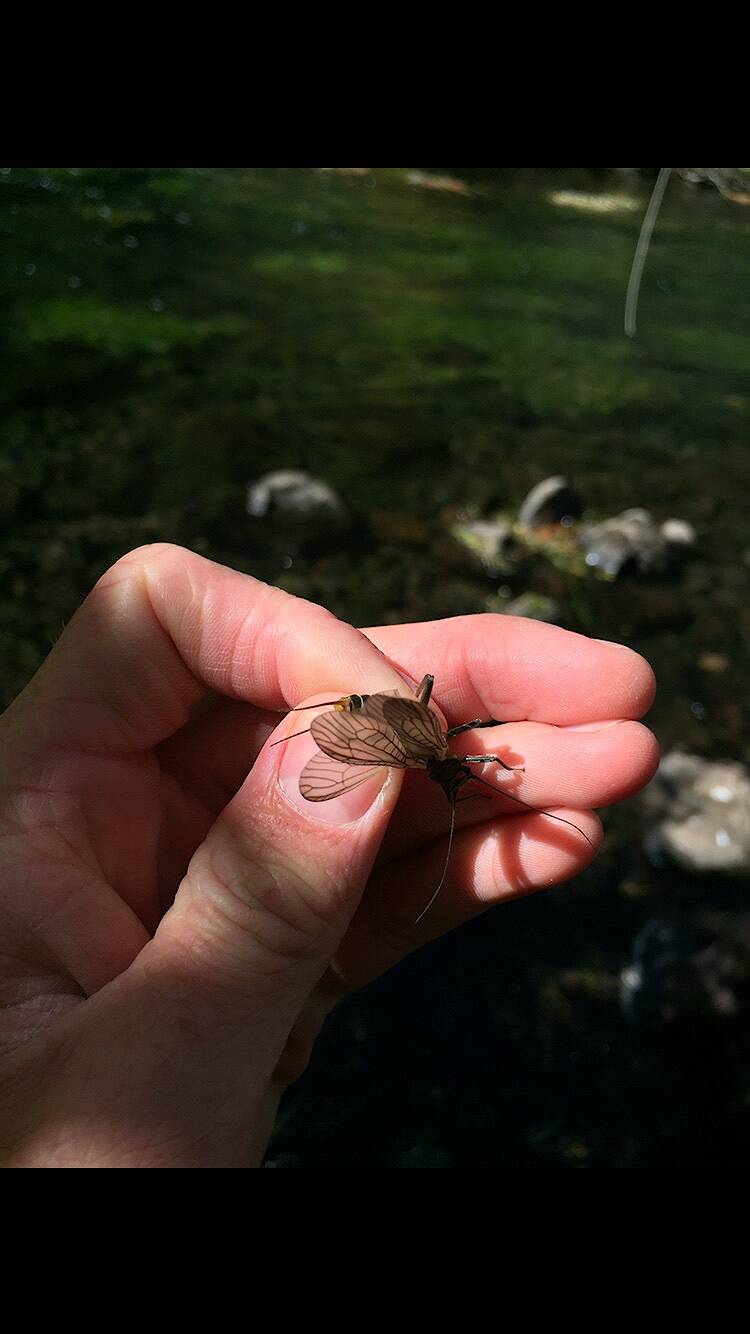

Uppersac on Dec 20, 2014December 20th, 2014, 11:11 am EST
Need help identifying this stonefly. I am located in Northern California, Siskiyou county. We get the salmon fly hatch and the golden stone hatch in the spring time, but this stonefly hatch happens in the fall. This hatch only happens on Burney creek
Brian Theriot
Northern California fly fishing guide
www.redhackleflyfishing.com
Northern California fly fishing guide
www.redhackleflyfishing.com
Millcreek on Dec 24, 2014December 24th, 2014, 6:09 am EST
Hi Brian-
Although stonefly records are somewhat sparse for the area the only one I can come up with is Doroneuria baumanni. It fits the size, coloration and wing venation shown in your photos. Some photos and descriptions can be seen here: http://www.johnkreft.com/golden-stonefly-cousin-doroneuria-baumanni/ and here: https://journals.lib.byu.edu/spc/index.php/wnan/article/.../28244
Mark
Although stonefly records are somewhat sparse for the area the only one I can come up with is Doroneuria baumanni. It fits the size, coloration and wing venation shown in your photos. Some photos and descriptions can be seen here: http://www.johnkreft.com/golden-stonefly-cousin-doroneuria-baumanni/ and here: https://journals.lib.byu.edu/spc/index.php/wnan/article/.../28244
Mark
"If we knew what it was we were doing, it would not be called research, would it?"
-Albert Einstein
-Albert Einstein
Uppersac on Dec 24, 2014December 24th, 2014, 10:21 am EST
Mark, thank you for identifying. No one could ever figure out the real name for that stonefly, but looks like you cleared it up for me.
Brian Theriot
Northern California fly fishing guide
www.redhackleflyfishing.com
Northern California fly fishing guide
www.redhackleflyfishing.com
Taxon on Dec 24, 2014December 24th, 2014, 11:09 am EST
Hi Brian-
1ncidentally, Doroneuria baumanni does indeed have a common name, which is Cascades Stone.
However, rather than it having been acquired via the fly fishing community, both it and all other N. American stonefly species known at the time, were assigned common names by an ad hoc group led by Dr. Bill Stark.
1ncidentally, Doroneuria baumanni does indeed have a common name, which is Cascades Stone.
However, rather than it having been acquired via the fly fishing community, both it and all other N. American stonefly species known at the time, were assigned common names by an ad hoc group led by Dr. Bill Stark.
Millcreek on Dec 24, 2014December 24th, 2014, 11:25 am EST
Brian-
You're welcome as far as the identification is concerned. Just remember that it's a guess.
Mark
You're welcome as far as the identification is concerned. Just remember that it's a guess.
Mark
"If we knew what it was we were doing, it would not be called research, would it?"
-Albert Einstein
-Albert Einstein
RiverKeeper on Dec 24, 2014December 24th, 2014, 2:19 pm EST
Thanks for sharing my website on the Doroneuria baumanni post.
And thanks to Roger for informing me of the common name - Cascades Stone. Can you give me a timeframe for when the name was given?
Thanks
And thanks to Roger for informing me of the common name - Cascades Stone. Can you give me a timeframe for when the name was given?
Thanks
John
RiverKeeper Flies
www.johnkreft.com
RiverKeeper Flies
www.johnkreft.com
Taxon on Dec 24, 2014December 24th, 2014, 4:38 pm EST
Hi John-
Sure, the year was 1998, and here is a link to the Scientific Paper
Can you give me a timeframe for when the name was given?
Sure, the year was 1998, and here is a link to the Scientific Paper
Entoman on Dec 25, 2014December 25th, 2014, 6:36 am EST
Welcome to the forum!
The time of year suggests another possibility. Claassenia sabulosa (Short-winged Stone) is the only perlid well known for hatching in the Fall. The other genera of perlids are usually Spring and Summer emergers. The males have stubby wings well short of their abdomen tips. Even though the females have longer wings, the ones on your specimen (that I believe to be female) seem a little long. Is the anomaly the slightly longer wings or the time of year?
Fortunately, western perlids are relatively easy to identify. This can be done with the naked eye if any spcimens were retained. Check out our encyclopedia for info on how to do this. Are there any closeups of the head, associated male abdominal ventrals or some associated nymph dorsals?
The time of year suggests another possibility. Claassenia sabulosa (Short-winged Stone) is the only perlid well known for hatching in the Fall. The other genera of perlids are usually Spring and Summer emergers. The males have stubby wings well short of their abdomen tips. Even though the females have longer wings, the ones on your specimen (that I believe to be female) seem a little long. Is the anomaly the slightly longer wings or the time of year?
Fortunately, western perlids are relatively easy to identify. This can be done with the naked eye if any spcimens were retained. Check out our encyclopedia for info on how to do this. Are there any closeups of the head, associated male abdominal ventrals or some associated nymph dorsals?
"It's not that I find fishing so important, it's just that I find all other endeavors of Man equally unimportant... And not nearly as much fun!" Robert Traver, Anatomy of a Fisherman
Taxon on Dec 25, 2014December 25th, 2014, 12:14 pm EST
In case anyone is having trouble tracking with the posts in this (somewhat convoluted) thread, for purpose of adult stonefly comparison, the 1st image below is a cropped and slightly lightened version of the 1st photo from Uppersac (Brian Theriot's) id request.
And, the 2nd image below is a cropped version of the 1st photo from RiverKeeper (John Kreft's) wonderful blog, The Golden Stonefly Cousin – Doroneuria baumanni, which was (most helpfully) linked to in Millcreek (Mark Melton's) post.
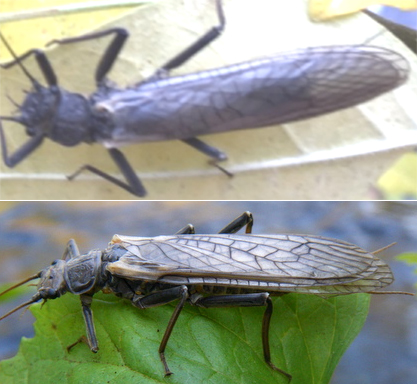
And, the 2nd image below is a cropped version of the 1st photo from RiverKeeper (John Kreft's) wonderful blog, The Golden Stonefly Cousin – Doroneuria baumanni, which was (most helpfully) linked to in Millcreek (Mark Melton's) post.

RiverKeeper on Dec 25, 2014December 25th, 2014, 3:11 pm EST
I've got a couple of other pics I could post that weren't included in my blog, but since I'm new I'm not sure how to add .jpg files.
John
RiverKeeper Flies
www.johnkreft.com
RiverKeeper Flies
www.johnkreft.com
Taxon on Dec 25, 2014December 25th, 2014, 7:24 pm EST
Hi John-
In order to add an image to an existing post, it must first be uploaded to a server somewhere, like on photobucket, or elsewhere.
Once the photo resides on a server, it's simply a matter of editing an existing post, and then inserting the web address of the image (surrounded by image begin and image end codes) wherever desired in the post.
For further clarification, please see Troutnut Forum Codes.
In order to add an image to an existing post, it must first be uploaded to a server somewhere, like on photobucket, or elsewhere.
Once the photo resides on a server, it's simply a matter of editing an existing post, and then inserting the web address of the image (surrounded by image begin and image end codes) wherever desired in the post.
For further clarification, please see Troutnut Forum Codes.
RiverKeeper on Dec 25, 2014December 25th, 2014, 8:09 pm EST
John
RiverKeeper Flies
www.johnkreft.com
RiverKeeper Flies
www.johnkreft.com
Millcreek on Dec 26, 2014December 26th, 2014, 5:46 am EST
John-
Those are nice pics. Not as good as the ones on the blog, but nice angles.
Mark
Those are nice pics. Not as good as the ones on the blog, but nice angles.
Mark
"If we knew what it was we were doing, it would not be called research, would it?"
-Albert Einstein
-Albert Einstein
RiverKeeper on Dec 26, 2014December 26th, 2014, 11:47 am EST
I agree Mark, which is why I didn't include them. Didn't know if they would be helpful here or not.
John
John
John
RiverKeeper Flies
www.johnkreft.com
RiverKeeper Flies
www.johnkreft.com
PaulRoberts on Jan 6, 2015January 6th, 2015, 7:17 pm EST
This is just a great site.
RiverKeeper on Jul 19, 2015July 19th, 2015, 2:15 pm EDT
Here is a nymph I found a couple of days ago while kicknetting. I'm guessing it's Doroneuria baumanni Nymph that I wrote about in my RiverKeeper Flies blog post - The Golden Stonefly Cousin – Doroneuria baumanni (http://www.johnkreft.com/golden-stonefly-cousin-doroneuria-baumanni/)


John
RiverKeeper Flies
www.johnkreft.com
RiverKeeper Flies
www.johnkreft.com
Taxon on Jul 19, 2015July 19th, 2015, 5:30 pm EDT
Hi John-
The link to the nymph photo need to be a url that ends with ".jpg".
The link to the nymph photo need to be a url that ends with ".jpg".
RiverKeeper on Jul 19, 2015July 19th, 2015, 10:05 pm EDT
Thanks for the help Roger - I changed the image.
John
RiverKeeper Flies
www.johnkreft.com
RiverKeeper Flies
www.johnkreft.com
Millcreek on Jul 20, 2015July 20th, 2015, 7:00 am EDT
John-
If you kept the specimen it shouldn't be a problem to ID it. It's a Perlidae species. There are only a few in California. Hesperoperla and Claasenia have anal gills and it doesn't appear that yours does. Doroneuria and Calineuria can be separated by the following features. Doroneuria has the dorsum of body with median, longitudinal row of fine, silky setae. Calineuria does not have the dorsum of body with median, longitudinal row of fine, silky setae.
If you kept the specimen it shouldn't be a problem to ID it. It's a Perlidae species. There are only a few in California. Hesperoperla and Claasenia have anal gills and it doesn't appear that yours does. Doroneuria and Calineuria can be separated by the following features. Doroneuria has the dorsum of body with median, longitudinal row of fine, silky setae. Calineuria does not have the dorsum of body with median, longitudinal row of fine, silky setae.
"If we knew what it was we were doing, it would not be called research, would it?"
-Albert Einstein
-Albert Einstein
RiverKeeper on Jul 22, 2015July 22nd, 2015, 4:02 pm EDT
John
RiverKeeper Flies
www.johnkreft.com
RiverKeeper Flies
www.johnkreft.com
Quick Reply
Related Discussions
Topic
Replies
Last Reply
6
Nov 12, 2012
by Brookyman
by Brookyman
2
Jan 19, 2010
by Dkak
by Dkak
Re: Biggest bluegills I've seen since I left Texas (subtitled: FINALLY wet a fly line!) 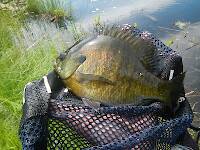
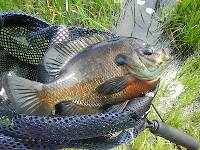
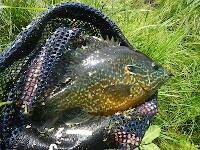
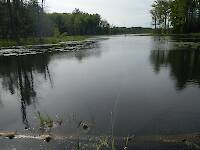
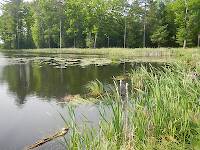
In the Photography Board by Jmd123
+ 5





In the Photography Board by Jmd123
6
Jun 10, 2018
by Jmd123
by Jmd123

